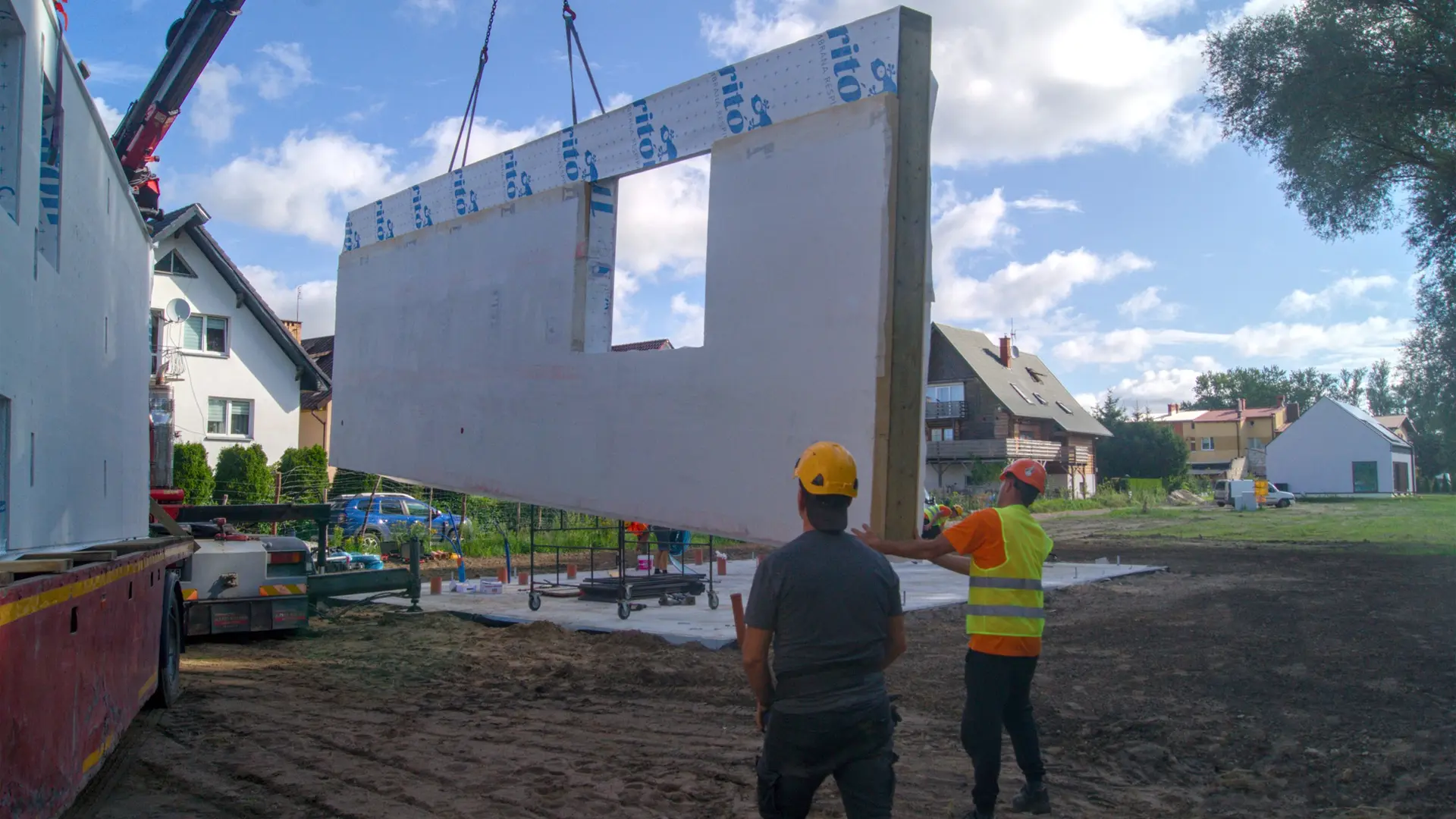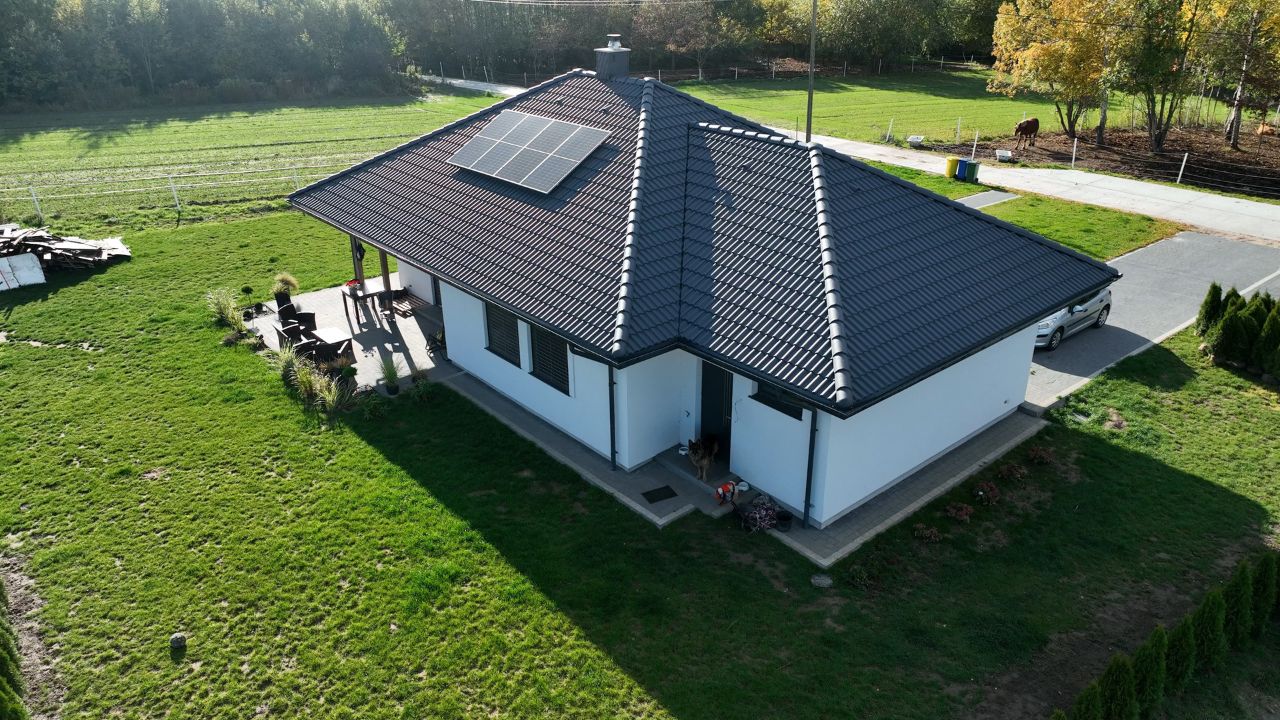Elemental prefabrication is a method of building construction in which the individual parts of the structure (walls, floors, roofs) are manufactured in a factory. The finished components are then transported to the construction site and assembled as a whole. Unlike spatial prefabrication, which produces complete modules (e.g. prefabricated rooms), component prefabrication covers only flat or linear building components.
In timber-frame technology, this type of prefabrication makes it possible to achieve a high degree of manufacturing precision and dimensional repeatability. This is possible because production takes place under controlled factory conditions. The elements are formed from pre-prepared structural timber, fitted with insulation, vapour barrier, sheathing layers and openings for window frames.
The advantages of element-based prefabrication are rapid on-site assembly, reduced workmanship errors and the ability to carry out work regardless of the weather. This method combines the accuracy of industrial production with the design flexibility characteristic of customised construction.




